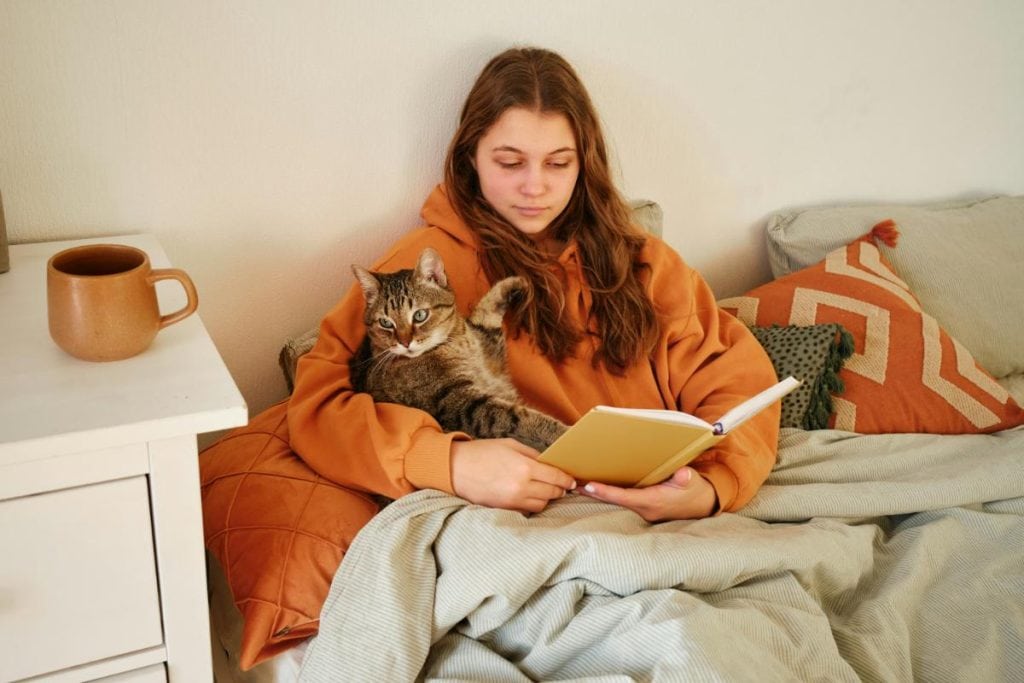Navigating the rental market can be tough for cat owners. It can be hard to find a property that accepts pets, let alone adjust your furry friend to their new home. Here are some top tips to make renting with your cat just that bit easier.

1. Choose Pet-Friendly Housing
The first step to renting with cats is finding pet-friendly accommodation. Not all landlords or property managers allow pets, so it’s essential to search for places that welcome cats. Start by checking rental listings for pet-friendly options, and be honest about your pet when inquiring about specific properties.
Some landlords might now allow dogs, but they might be open to cats, especially if they’re older or well-behaved. Look for terms like “pets allowed” or “cat-friendly” in listings.
2. Use a Roommate Matching Website
Wanting to rent with roommates? Finding the right place can be even easier with roommate-matching websites like SpareRoom. SpareRoom allows you to filter your living preferences, including pet policies. You can specify that you’re looking for pet-friendly apartments or roommates who are open to living with cats. This can save you a lot of time and effort in your search, helping you find a compatible living situation.
SpareRoom offers listings from all over the US, so whether you’re looking for roommates in LA, New York, or Boston, you can find the perfect place for you and your furry friend.
3. Prepare a Pet Resume
A pet resume can help convince apprehensive landlords to rent to you and your cat. Include details about your cat’s breed, age, behavior, and any training or certifications they may have. Mention that your cat is spayed or neutered, up-to-date on vaccinations, and well-behaved. You can also include references from previous landlords who can vouch for your cat’s good behavior.
4. Understand Pet Deposits and Fees
Many landlords require a pet deposit or additional pet rent. Make sure you understand these costs upfront and plan a budget. A pet deposit is usually refundable, while pet rent is an additional monthly fee. These costs can vary widely, so make sure to factor them into your overall budget.
5. Create a Cat-Friendly Space
Once you’ve secured a pet-friendly rental, the next step is to create a comfortable environment for your cat. Here are some ideas to help them feel settled:
- Cat trees and scratching posts – Provide plenty of scratching posts and cat trees for your cat to climb and file down their claws.
- Litter box placement – Place the litter box in a quiet, accessible location. Make sure to clean it regularly to avoid odors.
- Safe hideaways – Cats love to hide, so provide cozy spots like covered beds or boxes where your cat can retreat.
- Interactive toys – Keep your cat entertained with interactive toys, puzzle feeders, and plenty of playtime.
6. Cat-Proof Your Home
Cats are curious creatures and can get into trouble if your home isn’t cat-proofed. Here are some tips:
- Secure cords and cables – Cats may chew on cords, so secure them out of reach or use cord protectors.
- Block small spaces – Make sure there aren’t small gaps or spaces where your cat can get stuck.
- Remove toxic plants – Some plants are toxic to cats, so remove or keep them out of reach.
- Keep cleaning supplies locked away – Household cleaners and chemicals can be dangerous if your cat ingests them, so make sure your furry friend can’t get to them.
7. Maintain a Routine
Cats thrive on routine, so try to keep a consistent schedule for feeding, playtime, and cleaning the litter box. A stable routine can help reduce stress for your cat, especially if you’re transitioning to a new home.

8. Introduce Your Cat to the New Environment
Moving can be stressful for cats, so it’s important to introduce them to their new environment gradually. Start by confining your cat to one room with all their essentials (food, water, litter box, bed, and toys). Once they seem comfortable, let them explore the rest of the home. This can help them adjust more easily and feel more secure.
9. Communicate with Your Landlord
Make sure to keep your landlord in the loop regarding any pet-related issues or concerns. Inform them immediately if there are any damages caused by your cat and offer to cover the costs. Being proactive can help maintain a positive relationship with your landlord.
10. Get Pet Insurance
Pet insurance can be a valuable investment. It can help cover unexpected veterinary costs and provide peace of mind. Some policies also cover pet-related damages to rental properties, which can help maintain a good relationship with your landlord.
11. Regular Vet Visits
Keep your cat healthy by scheduling regular vet visits. Make sure they are up-to-date on vaccinations and flea treatments. A healthy cat is less likely to cause issues in your rental home.
12. Respect Your Roommates
If you’re living with roommates, make sure they’re comfortable with your cat. Discuss any concerns they might have and set boundaries to keep the household happy. Make sure your cat doesn’t cause any disruptions and respect common areas by keeping them clean and free of pet hair.
Final Thoughts
Renting with cats requires some extra effort and planning, but it’s possible to find a great home for you and your feline friend. By choosing pet-friendly housing, creating a comfortable environment for your cat, and communicating with your landlord, you can enjoy a stress-free living situation. Remember to use resources like SpareRoom to find the perfect pet-friendly apartment, and you’ll be well on your way to a happy home with your cat.
